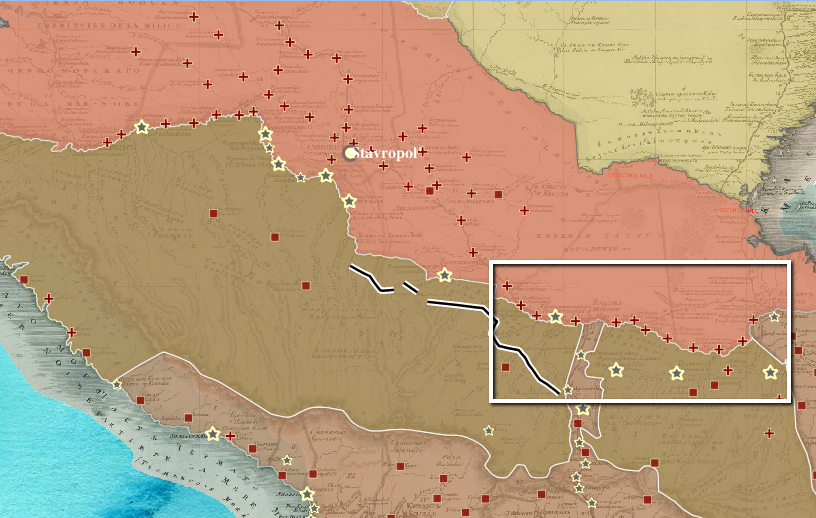Fortress Russia: far and near?
Many of the crucial questions about the nature of the empire's military geography emerge from the concepts of proximity and distribution. To what extent, for example, were military sites integrated into the civilian geography of towns and villages? As a matter of fact, does it make sense to separate the two? Do fortified locations spread uniformly along the frontiers, or do they cluster along particular segments? Do they tend to be found in isolated locations? in proximity to particular settlement types (monasteries, mines, etc.), road networks or major rivers?
The map above tells an interesting story about the relationship between military and civilian space. It suggests that while settlements could be located quite close to fortresses, foreposts, redoubts, and the like (see the cluster in the upper right-hand corner of the map), the potential for proximity was limited to settlements of particular kinds. In this map, the vast majority of settlements located near fortified locations were derevni rather than sela (villages with churches).
Then again, it is a different picture along the "Ukrainian line" than on the steppe frontier in Orenburg province. In this map, villages with churches are nestled right up against the line, and quite close to the Mikhailovskaia and Slobodskaia fortresses at the eastern end.

One more map throws a different light on the matter. This last map shows the military sites located in Kavkazskaia oblast' (with its administrative center in Stavropol') and the lands of the Caucasian mountaineers.

In the northwestern region of the map we can easily see that villages with churches are located exclusively in the portion of the Caucasus already under "regular" Russian rule. In the north Caucasian highlands, there are but a handful of derevni.
In Kabarda and Chechnya (see the boxed area), the map confirms a suspicion that likely arose when looking at the Orenburg frontier: that larger and/or more permanent settlement - assuming we feel bold enough to associate those traits with sela - depended not on proximity to a fortified site, but on whether that site was located squarely in territory ruled through regular Russian administrative institutions.